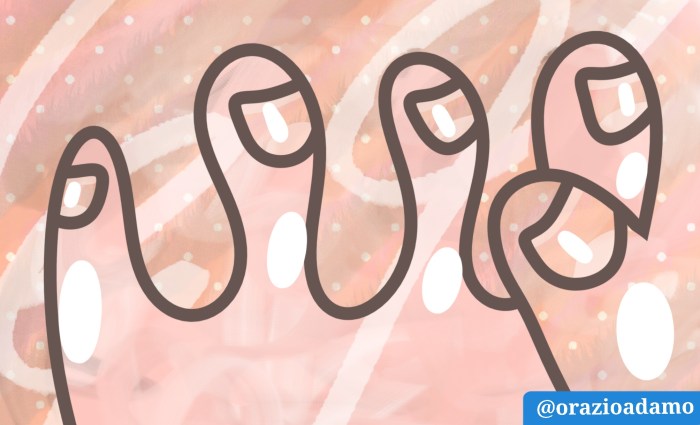
The Day That Would Not End: A Journey Through Time
The Day That Would Not End sets the stage for an enthralling exploration of time, reality, and the human condition. Imagine a world where the sun never sets, where the cycle of day and night ceases to exist. What would happen to our perception of time?
How would we cope with the unending light and the absence of a natural rhythm? This thought experiment delves into the philosophical, psychological, social, and physical implications of an endless day, uncovering the profound impact it would have on our lives.
From the potential psychological effects of an endless day, such as anxiety, depression, and altered sleep patterns, to the societal implications of disrupted routines and the breakdown of traditional structures, this exploration examines the far-reaching consequences of living in a world without end.
We’ll also look at how artists have used the concept of an endless day to explore themes of time, eternity, and the human condition in literature, film, and music.
The Psychological Impact of an Endless Day: The Day That Would Not End

Imagine a world where the sun never sets, where the familiar rhythm of day and night is replaced by an unending cycle of light. This is the unsettling reality of an endless day, a scenario explored in countless works of fiction and a thought experiment that probes the depths of human psychology.
The absence of a natural cycle, a fundamental element of human experience, can have profound and far-reaching psychological consequences.
The Impact of Disrupted Circadian Rhythms
The human body is intrinsically attuned to the natural cycle of day and night. This cycle, known as the circadian rhythm, regulates various bodily functions, including sleep-wake patterns, hormone production, and core body temperature. A disruption of this rhythm, as in the case of an endless day, can lead to a cascade of psychological and physiological effects.
- Sleep Disturbances:The absence of darkness and the natural cues that trigger sleep can lead to severe sleep disturbances, characterized by insomnia, difficulty falling asleep, and fragmented sleep. This, in turn, can contribute to fatigue, irritability, and impaired cognitive function.
- Mood Swings and Depression:The disruption of circadian rhythms can also impact mood regulation, leading to increased irritability, anxiety, and even depression. The lack of a natural sleep-wake cycle can disrupt the production of key mood-regulating hormones, such as melatonin and serotonin, further contributing to these negative emotional states.
- Cognitive Impairment:The sustained lack of sleep and the disruption of natural rhythms can significantly impair cognitive function, affecting attention, memory, and decision-making abilities. Studies have shown that sleep deprivation can lead to reduced alertness, impaired reaction times, and difficulty concentrating, making it challenging to perform daily tasks effectively.
Coping Mechanisms and Psychological Adaptations
While the psychological impact of an endless day can be significant, humans are remarkably resilient and adaptable. In the face of such a profound disruption, individuals might develop coping mechanisms and psychological adaptations to navigate the challenges.
- Artificial Cycles:To create a sense of normalcy and regulate their internal rhythms, individuals might establish artificial cycles, such as setting specific times for “sleep” and “wakefulness” based on internal cues or external factors like the presence or absence of light.
This can help maintain a semblance of a regular routine.
- Social Support and Community:The shared experience of an endless day could foster a sense of community and shared purpose, providing emotional support and a sense of belonging. Social interaction and shared activities can help alleviate feelings of isolation and provide a sense of structure and routine.
- Meaning-Making and Purpose:Individuals might find meaning and purpose in the face of an endless day by focusing on creative pursuits, personal growth, or contributing to a shared goal. This can provide a sense of direction and motivation, helping to counteract the existential anxieties that might arise from the lack of a natural cycle.
The Social Implications of an Endless Day

Imagine a world where the sun never sets, where the rhythm of day and night is erased, and time itself seems to stretch infinitely. This is the reality of an endless day, a concept that has fascinated and terrified humanity for centuries.
But beyond the philosophical implications, an endless day would have profound social consequences, reshaping our lives, relationships, and the very fabric of society.
The Impact on Human Relationships
The constant presence of daylight would undoubtedly alter human behavior and interaction. The traditional boundaries between work and leisure, day and night, would blur, leading to a potential disruption in our sleep cycles and social rhythms. This could lead to a variety of challenges, including:
- Disrupted Sleep Patterns:The absence of darkness could lead to sleep deprivation, impacting physical and mental health. People might experience difficulty falling asleep, leading to increased stress, irritability, and decreased productivity.
- Altered Social Dynamics:The blurring of work and leisure boundaries could lead to a decline in personal time and an increase in work-related stress. Social gatherings and family time might become less frequent, as people struggle to find time for themselves and loved ones.
- Impact on Relationships:The constant presence of others could lead to feelings of claustrophobia and a decline in personal space. Relationships could be strained, as individuals struggle to maintain their privacy and autonomy in a world without respite.
The Transformation of Societal Structures
The social implications of an endless day extend beyond individual relationships, impacting the very structure of society. The traditional 24-hour cycle, which governs everything from work schedules to government operations, would become obsolete. This could lead to a variety of adaptations:
- New Work Schedules:A society accustomed to an endless day might adopt flexible work schedules, allowing individuals to choose their own hours and work patterns. This could lead to increased productivity and employee satisfaction, as individuals can better manage their work-life balance.
- Shifting Social Norms:Social norms and expectations would likely change in response to the absence of a night. People might become more accustomed to socializing at all hours of the day, with activities like dining and entertainment becoming more fluid and less bound by traditional time constraints.
- Evolving Infrastructure:The constant daylight would require adaptations to infrastructure. For example, buildings might need to be designed to manage the heat and glare of the sun, and energy consumption patterns would likely change.
A Society Adapted to Perpetual Daylight, The day that would not end
To illustrate how society might adapt to an endless day, consider a hypothetical scenario:
Imagine a society where the concept of “night” has become a distant memory. The streets are perpetually bathed in a soft, artificial light, mimicking the sun’s warmth. People work and socialize in shifts, with some individuals choosing to work during the “day” while others prefer the cooler “night” hours. Buildings are designed to maximize natural light, with retractable roofs and sunshades providing flexibility. Energy is generated through renewable sources, such as solar power, which are abundant in this world of endless daylight. This society has embraced the challenges of an endless day, transforming its social structures and embracing a new rhythm of life.
It was one of those days that just wouldn’t end, like a never-ending loop of chores and deadlines. I felt like I was running on fumes, but somehow, I managed to keep going. As the sun finally dipped below the horizon, I found myself wishing for a little bit of holiday magic.
And then, I stumbled upon this wonderful article, merry christmas from howdoesshe to you , that reminded me of the true meaning of Christmas. It was a gentle reminder that even on the longest, most tiring days, there’s always something to be grateful for, and that a little bit of kindness can go a long way.
It felt like the day that would not end. The sun refused to set, casting an eerie, orange glow over everything. I needed a distraction, something to keep my mind off the endless daylight. That’s when I remembered the old phone case I had lying around.
Why not try to spruce it up? I found a great tutorial on how to make a cheap and easy phone case , and I was surprised at how much fun it was. By the time I finished, the sun had finally started to dip below the horizon.
It was a small victory, but it was enough to remind me that even the longest days eventually come to an end.
The day that would not end felt like a never-ending loop of tasks and chores. I was starting to feel the pressure mounting, but then I remembered the words of a wise friend: “You really rock” you really rock.
It was a simple reminder, but it helped me to refocus and tackle the day with a renewed sense of energy and purpose. And you know what? The day that would not end actually started to feel a little bit more manageable.




